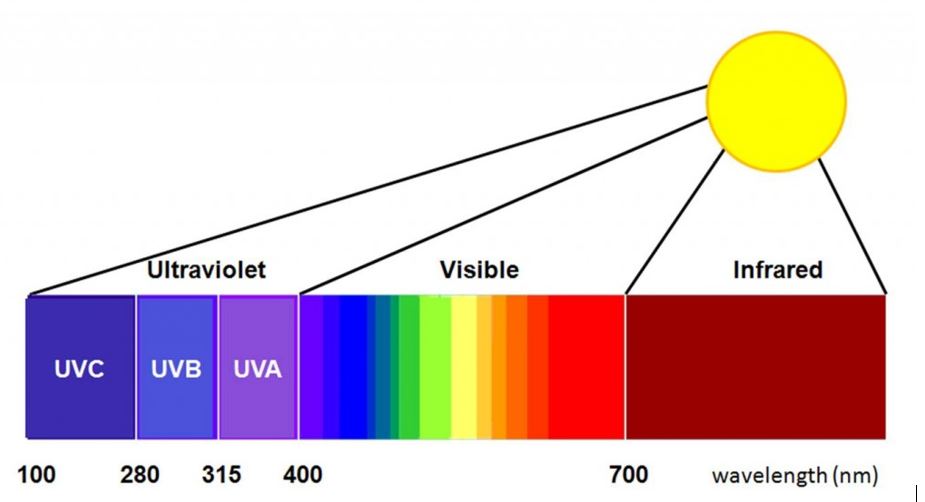During springtime with the lengthening days, the amount of ultraviolet light your recieve increases. This is measured by the UV index that helpsyou know the sun burn potential and Vitamin D production of exposed human skin. Ultraviolet light is of shorter wavelengths than the blue and violet we can see. It is divided into three bands: UVA, UVB, and UVC. UVA and UVB that are responsible for tanning and Vitamin D production – and sunburn if you are exposed too long. Sunblock lotion absorbs UVB and UVA, helping prevent burns by extending the time you can safely stay out. UVC is normally blocked by our atmosphere and is the most energetic. Human sources of UVC light are used for disinfecting, but avoid direct exposure to it. The UV that affects us from the sun is UVA and UVB.

As the sun gets higher during the Spring and into Summer, its rays are more direct and concentrated in a more compact area, which you notice as warmer sunshine. A second factor has to do with the ozone “layer”, which is really more like froth on top of a wave than a layer. Ozone is a version of oxygen, O3 with three oxygen atoms, unlike the usual oxygen we are used to, O2 that we breathe. Ozone smells like bleach and can be formed in a lightning strike and produce the distinct odor that accompanies thunderstorms. Up in the stratosphere it forms when UV light strikes an oxygen atom. The ozone blocks UVC light and much of UVA and UVB until the sun moves very high in the sky. If you could see in UV, the sun would appear dim and hazy low in the sky, but as the sun goes high it appears much, much brighter in the ultraviolet..
During the winter at northerly latitudes, the sun is low in the sky and dim in the UV. It is virtually impossible to get a sunburn, no matter how long you are out. But as we approach the summer months the sun is higher in the sky during the midday hours and is now bright in the UV and you can suffer sunburn. On the one hand, exposure to sunshine provides Vitamin D, which some doctors recommend under carefully controlled conditions. However, too much exposure leads to sunburn and increased risk of skin cancer. For those with light skin the time it takes to get sunburned is shorter; in addition, some medications can make you more susceptible to sunburn, so you may want to consult your doctor about your medications.
Factors that determine the power of UV exposure include your latitude, your altitude, the clarity of the atmosphere and the reflectivity of the ground around you, along with the clothing and hat you are wearing. Because of high scattering of UV light, fully half of it comes from the open sky away from the sun. For this reason, one can get sunburned even in the shade if one is outdoors long enough. This is why using suntan lotion and/or clothing and hats to cover the skin if you are out for extended periods is important. We include a far from exhaustive list below of a few sources for further reading, and there are many others.
Some References for further reading

